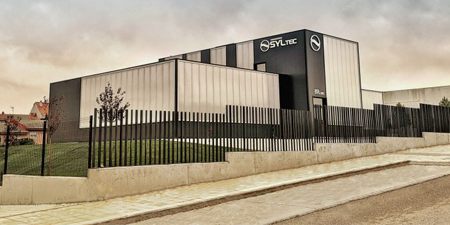CYBERSECURITY
The Cybersecurity and IT Architectures research line at ITCL is focused on developing secure, scalable solutions tailored to the most demanding digital and industrial environments. This line works closely with companies to design and implement resilient technological infrastructures capable of handling large volumes of data while ensuring the security, confidentiality, integrity, and availability of that information.
Our work centers on the design and implementation of secure, distributed architectures, including on-premise, cloud, edge, and fog computing infrastructures. These solutions are built following principles of Security by Design and Defense in Depth, incorporating proactive measures against cyber threats.
We develop and integrate advanced mechanisms for authentication, encryption, continuous monitoring, and intrusion detection, applied to both corporate systems and industrial or critical infrastructures. We also focus on the application of cybersecurity standards and best practices such as ISO 27001, NIST, and compliance with specific sectoral regulations.
Additionally, we design and validate secure architectures for connected environments such as Smart Cities, Smart Energy systems, and Factories of the Future (FoF), where distributed systems must ensure the protection of devices, communications, and sensitive data.
Our experience in R&D projects spans the entire country, collaborating with companies that require robust and cybersecure technological environments as the foundation for their digital transformation and evolution towards connected, intelligent industrial models.
CYBERSECURITY CAPABILITIES
GOVERNANCE, RISK, AND COMPLIANCE
- Threat identification and risk assessment related to information security that could impact assets and business continuity.
- Definition of policies and regulations to implement an effective cybersecurity strategy that protects information and ensures regulatory compliance.
- Awareness and training to promote a cybersecurity culture among employees and encourage good practices and skills to identify risks.
- Alignment with standards and frameworks (ISO 27001, NIST, CIS, etc.).
SECURE ARCHITECTURE AND SYSTEM DESIGN
- Design of secure network architectures based on principles like Zero Trust, least privilege, and defense in depth.
- Secure integration of IT (Information Technology) and OT (Operational Technology) environments.
- Development of secure and robust systems applying security-by-design from the outset.
- Analysis of requirements and characteristics of each application individually, using secure software development practices.
DATA SECURITY
- Implementation of measures to ensure the confidentiality, integrity, and availability of an organization’s critical data.
- Integration of post-quantum cryptography algorithms into systems, including low-performance devices (microcontrollers) or FPGAs, to ensure resistance against quantum attacks.
- Development of blockchain-based solutions to ensure data integrity and traceability.
- Application in various environments: healthcare, industrial, automotive, etc.
CYBERSECURITY LABORATORY
- Simulation of an IT/OT environment through a hybrid (physical and virtual) lab to carry out attacks in a controlled and isolated setting on any part of the topology.
- Evaluation of various architectures, configurations, and security tools to test their effectiveness and compare different security approaches.
- Analysis of vulnerabilities, mitigation strategies, response protocols, etc., across diverse scenarios to ensure the security of industrial environments or critical infrastructures.
- Generation of datasets to train AI models, using data from network traffic, malware, event logs, etc
THREAT MONITORING AND DETECTION
- Application of artificial intelligence techniques to detect anomalies in communications and processes.
- Deployment of monitoring systems with real-time detection capabilities and alert visualization on dashboards.
- Use of honeypots to research real-world threats and attack techniques with the aim of developing more effective defense measures.
OUR CYBERSECURITY TEAM
This line is driven by highly qualified senior and junior researchers committed to continuous innovation and development. Our team includes computer scientists, mathematicians, data analysts, and more.
Ángel López Campo
Head of Cybersecurity
Computer Engineer with extensive experience in participating in and managing R&D projects, especially in the fields of cybersecurity, embedded devices, and secure software development.
His main research areas focus on developing cybersecurity solutions for industrial environments and critical infrastructures, particularly related to honeypots, network monitoring systems, and anomaly detection. He is also specialized in IoT system design and the study of their vulnerabilities and protection measures, such as integrating post-quantum cryptography. He holds several software registrations and a patent.
As the head of Cybersecurity solutions at ITCL, he coordinates a multidisciplinary team to carry out projects and research that protect and add value to companies.

RESEARCH PROJECTS
ALTIUMCAT – Optimal system for measuring the displacement of the catenary wire to the pantograph
Optical solutions, profilometric sensors, and ToF sensors will improve accuracy and reduce issues in railway maintenance.
Duration: 2021 – 2023
ECENOVA – Ecosystem for Innovative Energy Communities
The creation of an ecosystem that facilitates energy exchange between prosumers, using energy communities as a means to efficiently and sustainably manage the production, storage, and distribution of renewable energy.
Duration: 2024-2025
EIFEDE Ecosystem – Boosting Energy with AI and Data
The main objective of the EIFEDE Group is to promote a conducive environment for business innovation, focusing on the development and implementation of enabling technologies within the energy sector.
Duration: 2024-2025
Driving simulators as a basis for improving road safety
Minimizing risks is one of the core principles of road safety. In this regard, one valuable ally that can and should add an extra layer of support is the integration of driving simulators. These technological solutions can be extremely helpful for learning how to drive and obtaining a driver’s license while avoiding harm and reducing risks.
Syltec – Biomass systems maintenance operations training simulator
Sector: Engineering and technological consultancy. Location: Valladolid
Solution based on the development of a simulator for industrial maintenance that through virtual reality allows the training and evaluation of workers in maintenance operations of biomass systems.
Infonorte – Dynamic inductive and hydrogen charging based on renewable sources
Sector: Road Mobility Location: Valladolid
A technological solution based on the development of an electric vehicle charging system using hydrogen from renewable sources. The system features dynamic inductive charging on the road, allowing for in-motion charging of electric vehicles, especially heavy goods vehicles.






